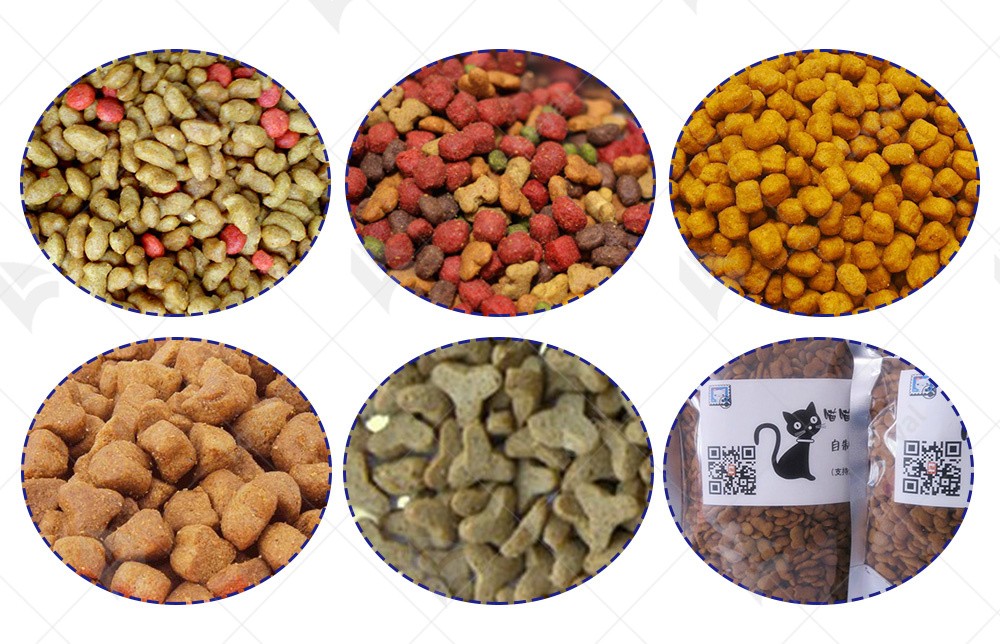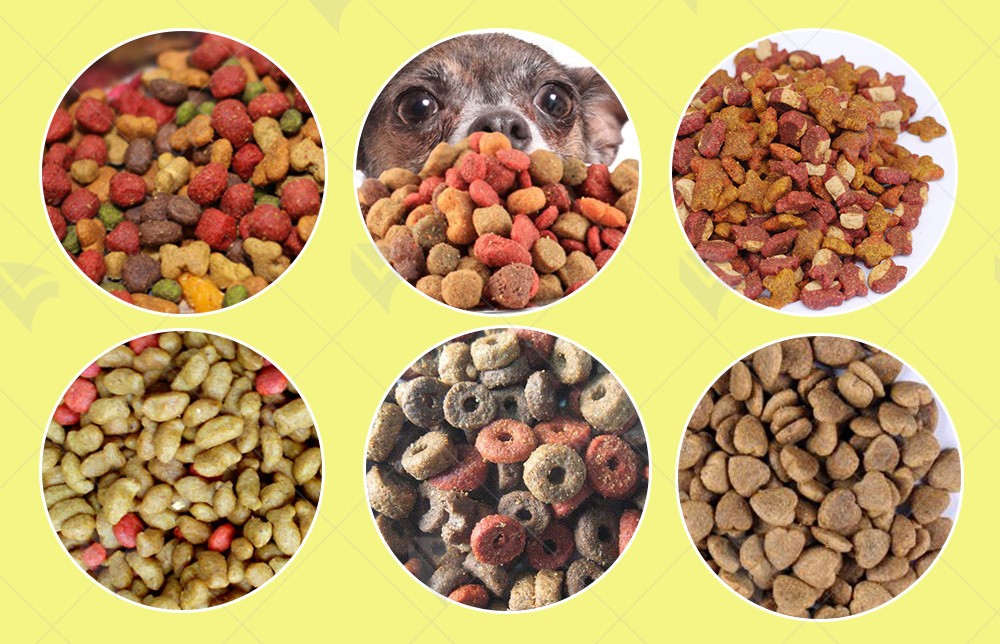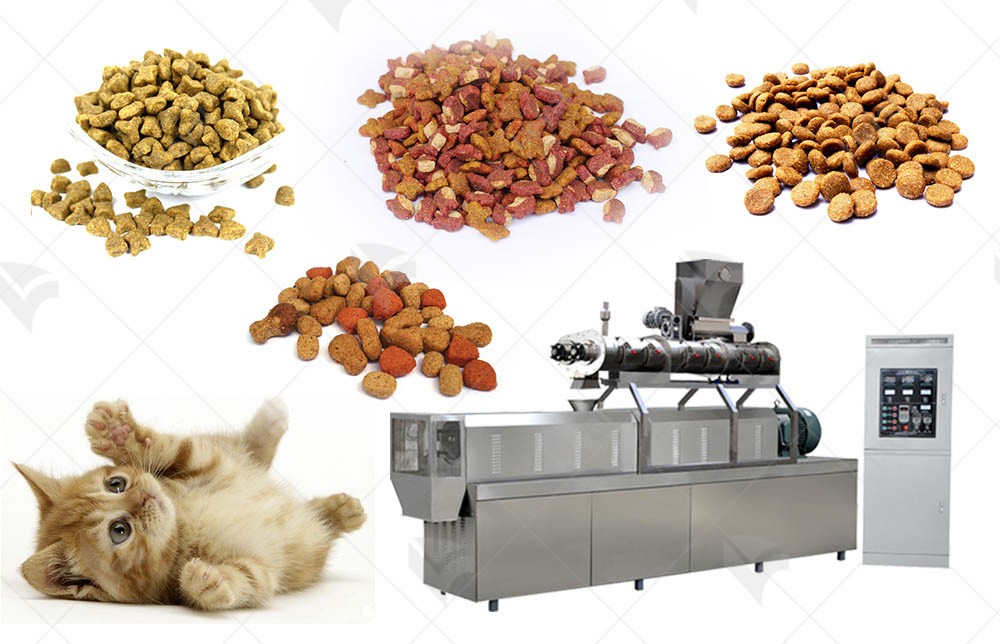How To Choose The Best Animal Food Equipment: 2024 Buyer’s Guide
Brief Overview of the Importance of Animal Food Production
In the realm of food production, animal food holds a pivotal position, fueling the growth and wellbeing of various livestock species worldwide. The significance of animal food production transcends mere nourishment; it is a cornerstone of global food security, economic prosperity, and environmental sustainability.
Animal agriculture is a vast industry, encompassing sectors such as dairy, poultry, swine, beef, and aquaculture. Each of these segments relies heavily on high-quality, nutrient-dense animal food to support the health and productivity of the animals under their care. Proper nutrition is vital for maximizing growth rates, enhancing reproduction capabilities, and improving overall health outcomes, which ultimately translates into a more abundant and diverse food supply for humans.
As populations continue to expand and consumer preferences evolve, the demand for animal-derived products is escalating. This growing demand underscores the critical need for efficient and sustainable animal food production systems. Fully automated animal food equipment emerges as a game-changer in this context, offering innovative solutions to streamline processes, minimize waste, and enhance resource utilization.
The integration of automation into animal food production brings forth numerous advantages. By automating tedious and labor-intensive tasks, manufacturers can increase throughput while maintaining stringent quality control standards. This not only enhances the profitability of operations but also ensures that animals receive a consistent and balanced diet, crucial for maintaining optimal health and performance.
Moreover, animal food production plays a vital role in rural economies, providing jobs and livelihoods for millions of people globally. By fostering the adoption of fully automated animal food equipment, we can bolster this sector's competitiveness and resilience, contributing to the overall growth and development of rural communities.
In conclusion, the importance of animal food production cannot be overstated. It is a cornerstone of global food security, economic growth, and environmental stewardship. As we navigate the challenges of meeting increasing demand for animal-derived products, fully automated animal food equipment offers a promising path forward, unlocking high-efficiency and energy savings while promoting sustainable and resilient food production systems.
It underpins global food security, economic growth, and environmental sustainability. By embracing fully automated animal food equipment, manufacturers can unlock new levels of efficiency and energy savings, contributing to the long-term viability and success of this vital sector. As industrial food machinery experts, we urge the industry to continue exploring and adopting innovative technologies that support sustainable and responsible animal food production practices.

Understanding Fully Automated Animal Food Equipment
To truly appreciate the impact of fully automated animal food equipment on the industry, it's essential to delve deeper into its core components, functionalities, and how they contribute to unlocking high-efficiency and energy savings.
Core Components of Fully Automated Systems
At the heart of any fully automated animal food equipment setup are several key components that work in harmony to achieve seamless production. These include:
|
Ingredient Handling Systems |
Automated conveyor belts and elevators efficiently transport raw materials from storage bins to mixing tanks, ensuring precise ingredient proportions are maintained. |
|
High-Precision Mixers |
Equipped with advanced sensors and control systems, these mixers blend ingredients to exact formulations, ensuring uniform quality in every batch. |
|
Extrusion Machines |
Specialized for shaping the mixed feed into pellets or other desired forms, extrusion machines operate at optimal temperatures and pressures to achieve the desired texture and density. |
|
Drying and Cooling Systems |
After extrusion, the feed undergoes drying and cooling processes to remove moisture and stabilize its properties. Automated temperature and humidity controls ensure consistent results. |
|
Packaging Machinery |
Automated bagging or boxing systems ensure that the finished product is safely and efficiently packaged for distribution. |
Functionalities that Drive Efficiency and Energy Savings
The true power of fully automated animal food equipment lies in its ability to integrate these components into a cohesive system that maximizes efficiency and minimizes energy consumption. Some of the key functionalities that contribute to these benefits include:
|
Precision Control |
Advanced control systems monitor and adjust production parameters in real-time, ensuring optimal performance and minimizing waste. |
|
Automation of Repetitive Tasks |
By automating repetitive and labor-intensive tasks, manufacturers can free up resources for more value-added activities. |
|
Energy Efficiency |
Energy-saving designs and efficient motors reduce power consumption, while intelligent control algorithms optimize energy usage based on production demands. |
|
Continuous Improvement |
Integrated data logging and analysis tools enable manufacturers to identify areas for improvement and continuously refine their production processes. |

Unlocking High-Efficiency with Fully Automated Animal Food Equipment
In the competitive landscape of the animal feed industry, manufacturers are constantly seeking ways to enhance production efficiency and reduce costs. Fully automated animal food equipment emerges as a game-changer, offering unparalleled advantages in achieving high-efficiency operations.
1.Streamlining Production Processes
Fully automated animal food equipment streamlines production processes from raw material handling to final product packaging. Automated conveyors, elevators, and mixers work seamlessly to ensure that ingredients are accurately weighed, mixed, and processed without manual intervention. This eliminates errors associated with human handling and significantly reduces downtime due to operator fatigue or mistakes.
2.Precision Control and Monitoring
One of the key advantages of fully automated systems is their ability to exercise precision control over production parameters. Advanced control systems monitor temperature, humidity, mixing speed, and other critical factors in real-time, adjusting them as needed to maintain optimal conditions. This level of precision ensures consistent product quality and minimizes waste due to over- or under-processing.
3.Optimized Resource Utilization
Fully automated equipment optimizes the utilization of resources such as raw materials, energy, and labor. By automating repetitive and labor-intensive tasks, manufacturers can allocate their workforce to more value-added activities, like quality control and process improvement. Additionally, the energy-saving designs and efficient motors used in these systems minimize energy consumption, further contributing to overall cost savings.
4.Enhanced Productivity and Scalability
Fully automated animal food equipment enables manufacturers to increase productivity and scalability with ease. As demand grows, these systems can be expanded or upgraded to accommodate higher production volumes without compromising efficiency. This flexibility allows manufacturers to quickly adapt to changing market conditions and maintain a competitive edge.
5.Continuous Improvement and Data-Driven Decision Making
Integrated data logging and analysis tools in fully automated systems provide manufacturers with valuable insights into their production processes. By analyzing this data, manufacturers can identify areas for improvement, optimize production schedules, and reduce waste. This data-driven approach to decision making ensures that production processes are continuously refined and improved, leading to even higher levels of efficiency.

Achieving Energy Savings through Automation in Fully Automated Animal Food Equipment
In the pursuit of sustainable and cost-effective animal feed production, energy savings have become a paramount concern for manufacturers. Fully automated animal food equipment offers a compelling solution by incorporating energy-efficient designs and advanced automation technologies that significantly reduce energy consumption.
|
Efficient Motor Technology |
One of the primary ways fully automated animal food equipment achieves energy savings is through the use of efficient motor technology. These motors are designed to operate at optimal efficiency levels, minimizing power loss during operation. By integrating variable frequency drives (VFDs) and other advanced control systems, manufacturers can further optimize motor performance, adjusting speed and torque as needed to match production demands. |
|
Intelligent Energy Management Systems |
Fully automated systems often incorporate intelligent energy management systems that monitor and control energy usage across the entire production process. These systems can identify areas of excessive energy consumption and implement corrective measures, such as adjusting production schedules or optimizing equipment settings. By continuously monitoring and optimizing energy usage, manufacturers can significantly reduce their energy bills and contribute to a more sustainable future. |
|
Reduced Idle Time and Waste |
Automation eliminates the need for manual intervention in many production tasks, reducing idle time and waste. When equipment is operated automatically, it can be programmed to run only when necessary, minimizing energy consumption during downtime. Additionally, by ensuring precise control over production parameters, automation reduces the risk of over- or under-processing, which can lead to wasted energy and raw materials. |
|
Optimized Heating and Cooling Processes |
In animal feed production, heating and cooling processes are essential for ensuring product quality and safety. Fully automated equipment often incorporates advanced temperature control systems that optimize these processes, minimizing energy consumption. By precisely regulating temperatures and adjusting them as needed, manufacturers can maintain optimal conditions while reducing energy waste. |

Challenges and Considerations in Adopting Fully Automated Animal Food Equipment
The transition to fully automated animal food equipment promises significant benefits in terms of efficiency, energy savings, and overall production quality.
1.Initial Investment Costs
One of the primary challenges in adopting fully automated animal food equipment is the significant initial investment required. Automated systems often involve complex machinery, advanced control systems, and software, all of which can be costly. Manufacturers must carefully weigh the potential long-term benefits against the upfront costs to determine if automation is a viable option for their business.
2.Technical Expertise and Training
Another important consideration is the need for technical expertise and training. Automated systems require specialized knowledge to operate and maintain effectively. Manufacturers must ensure that their staff is adequately trained to handle the new equipment, or they may face operational challenges and downtime. Additionally, ongoing training and support may be necessary to keep up with technological advancements and ensure optimal performance.
3.Integration with Existing Processes
Integrating fully automated equipment into existing production processes can be a complex task. Manufacturers must carefully assess their current workflows and identify potential bottlenecks or incompatibilities that could hinder the successful implementation of automation. This may involve modifying existing equipment, adjusting production schedules, or implementing new quality control measures.
4.Data Management and Security
Automated systems generate vast amounts of data, which must be managed and secured effectively. Manufacturers must have robust data management systems in place to collect, analyze, and store this information securely. Additionally, they must ensure that their systems comply with relevant data protection regulations to avoid potential legal and reputational risks.
5.Flexibility and Scalability
As businesses grow and evolve, so too must their production processes. Manufacturers must consider the flexibility and scalability of their automated systems to ensure that they can adapt to changing market demands and production requirements. This may involve investing in modular or scalable equipment that can be easily expanded or reconfigured as needed.

Future Trends and Innovations in Animal Food Equipment
As the animal food industry continues to evolve, so too do the technologies and equipment that support it. Fully automated animal food equipment is at the forefront of this transformation, driving efficiency, reducing energy consumption, and enhancing product quality. In this section, we will explore some of the future trends and innovations that are shaping the landscape of animal food equipment.
|
Smart Technology Integration |
One of the most prominent trends in animal food equipment is the integration of smart technology. This includes the use of sensors, IoT (Internet of Things) devices, and advanced analytics to monitor and optimize production processes in real-time. Smart systems can automatically adjust equipment settings based on production demands, reducing waste and enhancing efficiency. Additionally, they can provide valuable insights into operational performance, allowing manufacturers to identify areas for improvement and make data-driven decisions. |
|
Sustainability and Environmental Concerns |
Another key trend is the increasing focus on sustainability and environmental concerns. Manufacturers are looking for animal food equipment that minimizes waste, reduces energy consumption, and uses eco-friendly materials. This includes the development of more efficient motors, drives, and control systems, as well as the adoption of circular economy principles in equipment design and production. |
|
Precision Nutrition and Personalization |
As consumers become more informed about the impact of their food choices, there is a growing demand for animal food products that meet specific nutritional needs. This is driving the development of precision nutrition and personalized feeding systems that can tailor diets to individual animals based on their age, breed, health status, and production goals. Automated equipment plays a crucial role in enabling this level of precision and personalization, ensuring that animals receive the optimal blend of nutrients for their unique requirements. |
|
Automation of the Entire Supply Chain |
Looking further ahead, we can expect to see the automation of the entire animal food supply chain. This includes everything from ingredient sourcing and processing to packaging and distribution. By automating these processes, manufacturers can reduce costs, minimize errors, and improve traceability and quality control. Advanced logistics systems and robotics are already being used to automate certain aspects of the supply chain, and this trend is likely to accelerate in the coming years. |

Reference
The following are five authoritative foreign literature websites in the field of Industrial food machinery:
1. Food Engineering Magazine
Website: https://www.foodengineeringmag.com/
2.Food Processing Magazine
Website: https://www.foodprocessing.com/
3.Journal of Food Engineering
Website:https://www.journals.elsevier.com/journal-of-food-engineering
4. Food Manufacturing Magazine
Website:https://www.foodmanufacturing.com/
5. International Journal of Food Science & Technology
Website:https://onlinelibrary.wiley.com/